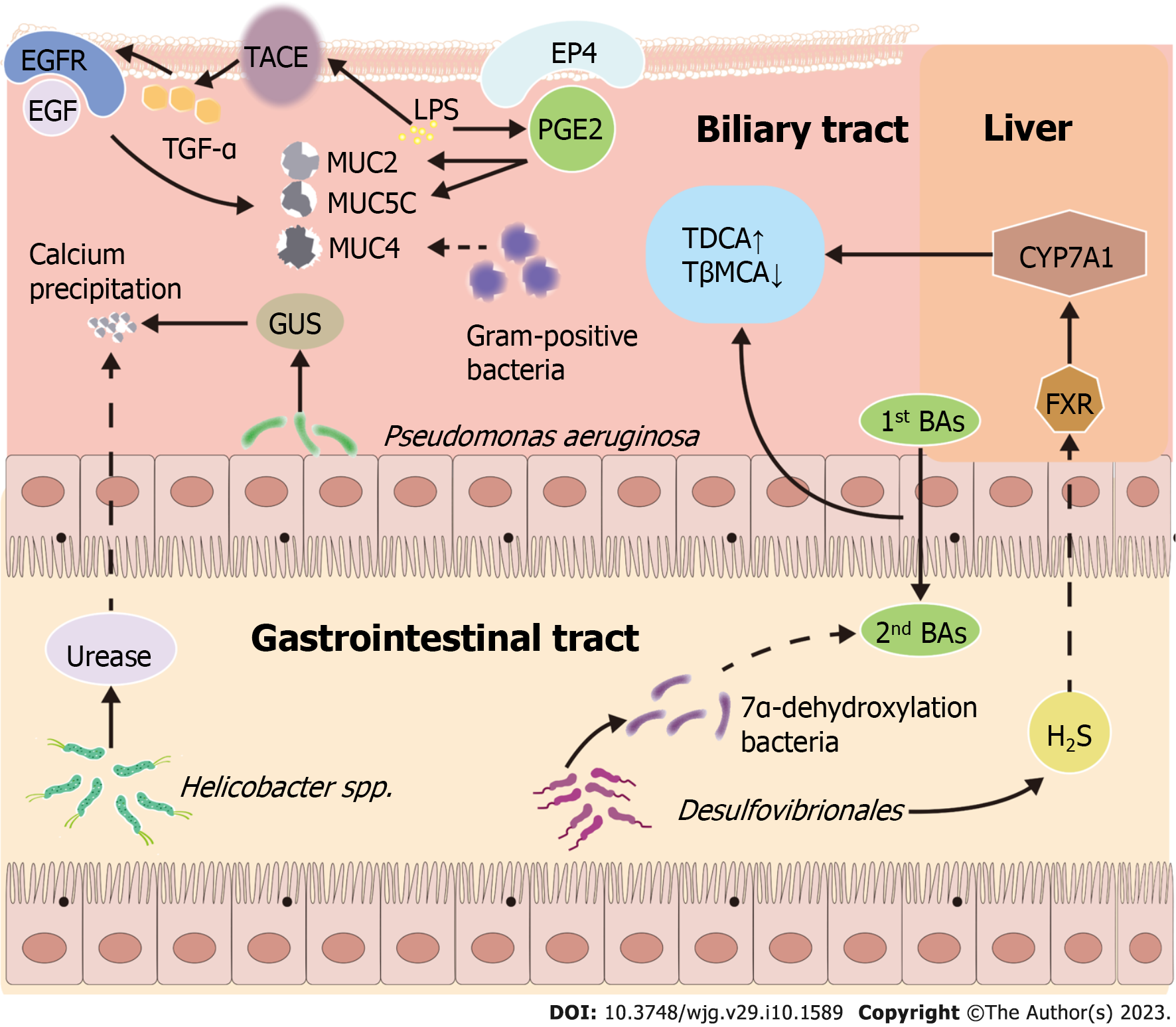Copyright
©The Author(s) 2023.
World J Gastroenterol. Mar 14, 2023; 29(10): 1589-1601
Published online Mar 14, 2023. doi: 10.3748/wjg.v29.i10.1589
Published online Mar 14, 2023. doi: 10.3748/wjg.v29.i10.1589
Figure 1 The underlying microbial mechanisms of gallstone formation.
The gastrointestinal microbiome may drive cholelithogenesis by: (1) The fecal microbiome enriched in Desulfovibrionales led to an increase of 7α-dehydroxylation bacteria, thus converting primary bile acids (Bas) to secondary BAs. Attributed to the regulation of the FXR-CYP7A1 pathway, Desulfovibrionales increased taurodeoxycholic acid and decreased Tauro-β-muricholic acid, which was induced by the production of H2S; (2) Lipopolysaccharide upregulated mucins via TACE/TGF-α/EGFR pathway and EP4/p38MAPK pathway; (3) Gram-positive bacteria contributed to the enriched expression of mucin 4 and subsequently modulated calcification; (4) Escherichia coli, Salmonella enterica, and Pseudomonas aeruginosa produced exogenous GUS to induce the hydrolysis of bilirubin diglucuronides, thus accelerating precipitation of calcium bilirubinate; and (5) Helicobacter spp. precipitated calcium via the urease activity. BA: Bile acids; CYP7A1: Cholesterol 7α-hydroxylase; EGFR: Epidermal growth factor receptor; EP4: E-prostanoid receptor 4; FXR: Farnesoid X receptor; GUS: β-glucuronidase; LPS: Lipopolysaccharide; MUC: Mucin; PGE2: Prostaglandin E2; PL: Phospholipase; TACE: Tumor necrosis factor-α converting enzyme; TβMCA: Tauro-β-muricholic acid; TDCA: Taurodeoxycholic acid; TGF: Transforming growth factor.
- Citation: Dan WY, Yang YS, Peng LH, Sun G, Wang ZK. Gastrointestinal microbiome and cholelithiasis: Current status and perspectives. World J Gastroenterol 2023; 29(10): 1589-1601
- URL: https://www.wjgnet.com/1007-9327/full/v29/i10/1589.htm
- DOI: https://dx.doi.org/10.3748/wjg.v29.i10.1589









